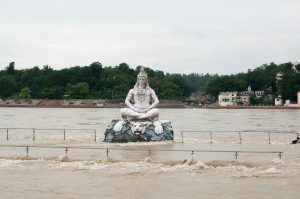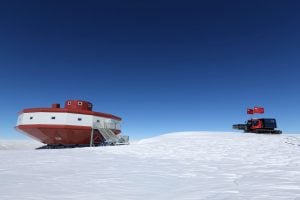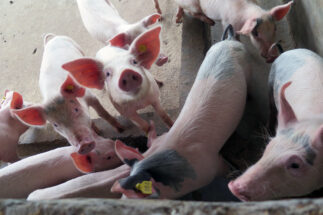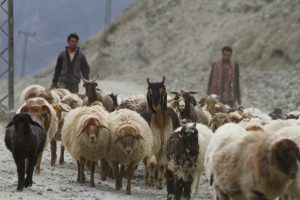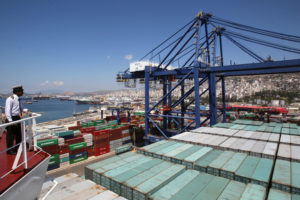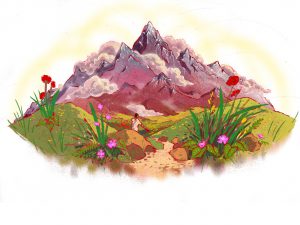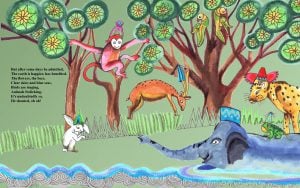“Half the season is gone. Where are the Hilsa?” asked Abu Jaher, a 40-year-old fisher from Samraj in Bangladesh’s coastal district Bhola. “There was a 65-day ban on fishing. Now it’s over, the rivers have enough water, but Hilsa are not available. I am worried. If we don’t get Hilsa, we won’t be able to feed our families, let alone repay our loans.”
Hilsa is the most prized fish in Bangladesh and adjacent West Bengal in India. It lives in the sea, but during the June-September monsoon in South Asia, it travels to rivers to breed. It is a valued catch all along the coastline of Asia and up the rivers, from the Yangtze to the Indus. Gastronomes are willing to pay high prices for Hilsa caught in the Bay of Bengal and, as they travel upstream, the Meghna, Ganga, Brahmaputra and their distributaries in Bangladesh and India.
Overfishing had decimated Hilsa stocks in this part of the world until the Bangladeshi government imposed a ban in March and April, when the juvenile fish are growing up and moving out to sea.
See: Bangladesh saves its favourite fish
Over half a million fishers in 16 of Bangladesh’s coastal districts are involved in fishing Hilsa at sea. This year, the Covid-19 pandemic struck while the ban was on. Despite the pandemic, fishers started to go out at the beginning of May, only to be hit with another ban from May 20 to July 22. Since 2019, small artisanal fishers have been included in the ban.
See: Bangladesh bans sea fishing for all, affecting half a million people
Since July 23, fishers have been scouring the sea and rivers for what is considered the king of fish in Bengal. They are hardly netting any, including in the rivers famous for Hilsa – the Padma, Meghna and Tetulia.
Hilsa prices have gone sky high in local markets. Most of the Hilsa now being caught are out of reach of the average person in Bangladesh, and are being exported to Gulf countries, North America, Europe and Australia – all big markets for the fish. In neighbouring India, most of the Hilsa in the markets are from the Narmada estuary on the country’s western coast.
The high prices in markets abroad do not help the Bangladeshi fishers, who are so indebted that they are forced to sell at a pre-fixed price.
“I repaired my boat and fishing gear ahead of the season. I took a loan with high interest,” Nuruddin Majhi, a fisher from Dhalchar – an island just off the coast in Bhola – told The Third Pole. “For us, Hilsa is gold. When we get Hilsa, our families get food. If there is no Hilsa, we starve. Every season we go to the Dadondar [a local money lender] and NGOs for loans. Now I don’t know how to repay my loan.”
Majhi had borrowed BDT 200,000 (USD 2,360) to repair his trawler. With the end of September and the peak season approaching, he has only been able to sell Hilsa worth BDT 70,000 (USD 826).

Where have the Hilsa gone?
Most of the Hilsa caught this season have been found in the sea. This has led experts to opine that increasing siltation at river-mouths has blocked the fish’s migration routes. The Hilsa needs river-mouths to be around 12-metres deep in order to move upstream.
It also needs fresh water. While the strong monsoon flow flushes out most of the pollutants from the rivers, it cannot completely eliminate out the very heavy pollution load from cities such as Dhaka. The capital of Bangladesh is on the banks of the Buriganga, which flows into the Meghna via the Dhaleshwari.
Some observers blame the increased movement of ships for the Hilsa shortage, while others allege that the authorities did not enforce the last fishing ban effectively. And there are commentators who say a shortage every few years is part of the natural cycle.
Dams and barrages also obstruct the upriver migration of the fish, though this problem is more common in India than in Bangladesh.
See: No silver sheen in the Ganga
Anisur Rahman, senior scientific officer of the Bangladesh Fisheries Research Institute, told The Third Pole that the shortage was due to a combination of siltation and pollution. He pointed out that the further upriver the Hilsa swim, the more polluted the water, forcing the fish to stay away.
However, the Bangladeshi government has taken many steps to increase Hilsa production, Rahman said, adding that he expected the catch to increase by the end of the season.
Kazi Ahsan Habib, chairman of the Department of Fisheries Biology and Genetics at Sher-e-Bangla Agricultural University, said, “If the water quality of the river is conducive and the current is right, Hilsa is produced. Water flow and optimum water quality, oxygen level, salinity level, these are the big factors. Hilsa start coming upstream when they find a suitable environment. Disruption in their natural breeding environment may impact their migration.”
Before the shortage, the ban and the pandemic
Hilsa stocks have been rejuvenated by the fishing bans, but the repeated bans are crippling for most of the fishers, who are totally dependent on their daily catch.
See: Opinion: the human cost of Hilsa conservation
Abdul Jalil Hawlader, president of the Pirojpur District Small Fishermen’s Association, said fishing in coastal areas stopped for much of this year. And when it was allowed, lockdowns due to the Covid-19 pandemic meant there were no storage or shipping facilities.
Amrit Jaladash – from a traditional fishing community of about 600,000 people in Chittagong district – said, “We could not go fishing for six months this year. We don’t have any other income. We are in extreme crisis. Our debt burden has increased.”
See: In photos: The forgotten fishers of Bangladesh
Coast Trust, a Dhaka-based NGO, carried out a recent survey in Cox’s Bazar, Lakshmipur, Bhola, Patuakhali, Khulna and Bagerhat districts. It found that the ban had left about 80% of the fishers without any means of earning a livelihood. The survey showed around half the fisher families were unable to afford three meals a day.
The government distributes 43 kg of rice to each fisher family every month during the ban, but only if the fisher has an identity card. Many fishers complain they have not got their identity cards despite fulfilling all requirements.
The survey by Coast Trust showed 34.2% of fishing families did not get the rice despite having identity cards. Half of those who got the rice got it a month late.
However, Farhana Lovely, district fisheries officer for Chittagong, told The Third Pole that with over 26,000 registered fishermen in the district, “We have given rice to 26,575 people as rehabilitation assistance during the ban.” Azharul Islam, district fisheries officer for Bhola, said there are 130,996 registered fishers in the district; “80,000 families were initially given 40 kg of rice a month for four months. Later another 170,008 people were given 58 kg more.”
Experts estimate that even during a fishing season with a good catch, a fisher family spends BDT 10,000-12,000 (USD 120-140) per month, while earning around BDT 10,000. So they keep getting deeper and deeper into a debt trap, and do not have the education or skills to earn an income in any other way.
![<p>Seeking the elusive Hilsa at the mouth of the Meghna near Tajumuddin in Bhola district, Bangladesh [Image by: Rafiqul Islam Montu]</p>](https://dialogue.earth/content/uploads/2020/09/Fishing-for-Hilsa-at-the-rivermouth-by-Rafiqul-Islam-Montu.jpg)


